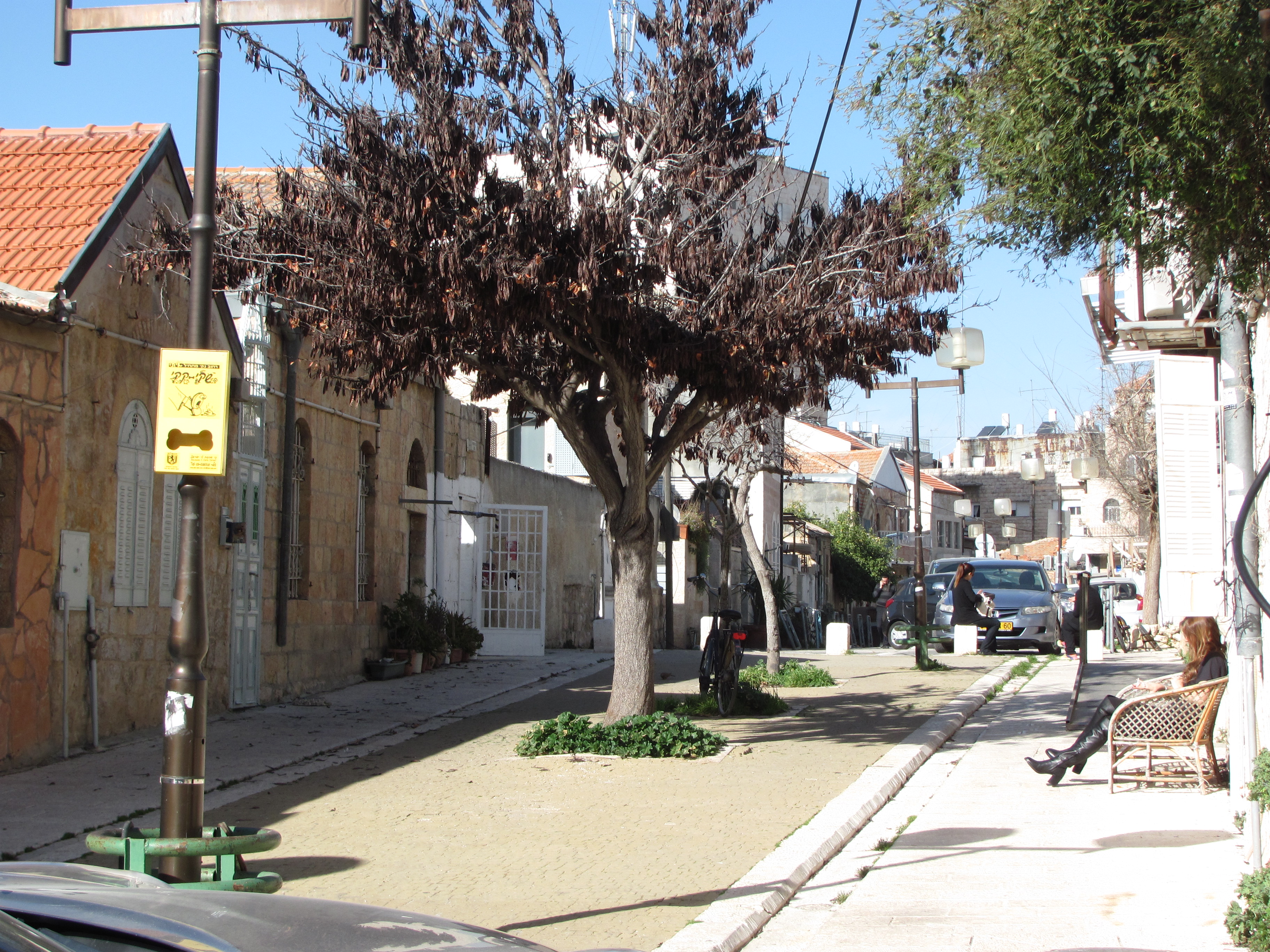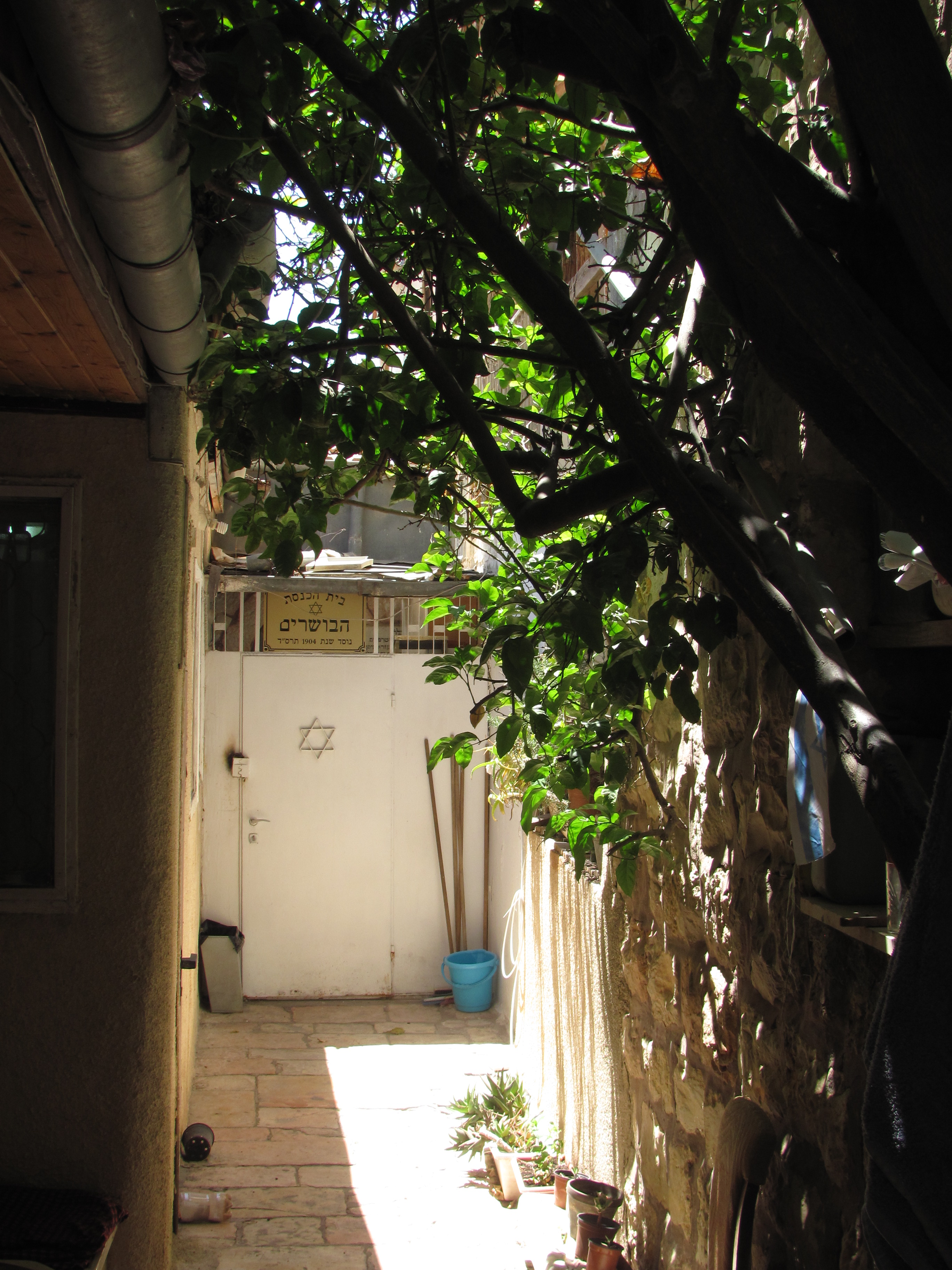Zikhron Tuvya on:
[Wikipedia]
[Google]
[Amazon]
 Zikhron Tuvya ( he, זכרון טוביה, Recollection of od'sGoodness), also spelled Zichron Tuvia, is a former courtyard neighborhood in
Zikhron Tuvya ( he, זכרון טוביה, Recollection of od'sGoodness), also spelled Zichron Tuvia, is a former courtyard neighborhood in

 Zikhron Tuvya was founded in 1890. It was the twenty-third Jewish neighborhood established outside the Old City Walls, and the eleventh neighborhood founded by Yosef Rivlin. Other founders included Rabbis Nota Zvi Hamburger, David Boymgarten, Shmuel Zukerman, and Mechel Leib Katz. Moshe Meltzer Kantrowitz purchased the land from the Arabs of Lifta.
The initial plan called for the construction of 100 homes, but in the end only 30 to 40 were completed. The neighborhood, designed by
Zikhron Tuvya was founded in 1890. It was the twenty-third Jewish neighborhood established outside the Old City Walls, and the eleventh neighborhood founded by Yosef Rivlin. Other founders included Rabbis Nota Zvi Hamburger, David Boymgarten, Shmuel Zukerman, and Mechel Leib Katz. Moshe Meltzer Kantrowitz purchased the land from the Arabs of Lifta.
The initial plan called for the construction of 100 homes, but in the end only 30 to 40 were completed. The neighborhood, designed by

 In 1992 the Jerusalem municipality designated Zikhron Tuvya as the first historic neighborhood to undergo rehabilitation, due to its severe state of deterioration and neglect. The street was paved and turned into a parking lot, with vehicles allowed to enter and exit from one end of the street only. Upgraded light standards were also installed.
The process of home remodeling began at that time and continues to this day. A notable renovation is the Yefe Nof House (#26), which was rebuilt in 2000. The work involved constructing a new two-story edifice on the base of the original one-room house, which was wide.
According to a 2009 Jerusalem survey, Zikhron Tuvya, like other historic neighborhoods in the vicinity, has an average apartment size of , one of the smallest in the city. The exterior of the homes sport a variety of blue-painted doors, windows, and gates, as well as horseshoes and
In 1992 the Jerusalem municipality designated Zikhron Tuvya as the first historic neighborhood to undergo rehabilitation, due to its severe state of deterioration and neglect. The street was paved and turned into a parking lot, with vehicles allowed to enter and exit from one end of the street only. Upgraded light standards were also installed.
The process of home remodeling began at that time and continues to this day. A notable renovation is the Yefe Nof House (#26), which was rebuilt in 2000. The work involved constructing a new two-story edifice on the base of the original one-room house, which was wide.
According to a 2009 Jerusalem survey, Zikhron Tuvya, like other historic neighborhoods in the vicinity, has an average apartment size of , one of the smallest in the city. The exterior of the homes sport a variety of blue-painted doors, windows, and gates, as well as horseshoes and
 Zikhron Tuvya ( he, זכרון טוביה, Recollection of od'sGoodness), also spelled Zichron Tuvia, is a former courtyard neighborhood in
Zikhron Tuvya ( he, זכרון טוביה, Recollection of od'sGoodness), also spelled Zichron Tuvia, is a former courtyard neighborhood in Jerusalem
Jerusalem (; he, יְרוּשָׁלַיִם ; ar, القُدس ) (combining the Biblical and common usage Arabic names); grc, Ἱερουσαλήμ/Ἰεροσόλυμα, Hierousalḗm/Hierosóluma; hy, Երուսաղեմ, Erusałēm. i ...
. Founded in 1890, it was the twenty-third Jewish neighborhood to be established outside the Old City walls. The neighborhood consisted of parallel row-houses facing each other across a wide street, today named Zikhron Tuvya Street. Initially populated by tradesmen and workshops, it became a residential neighborhood after the 1920s. It is now part of the larger Nachlaot
Nachlaot ( he, נחלאות, also ''Naḥlaʾoth'') is a cluster of 23 courtyard neighborhoods in central Jerusalem surrounding the Mahane Yehuda Market. It is known for its narrow, winding lanes, old-style housing, hidden courtyards and many sma ...
neighborhood.
Name
The name of the neighborhood is taken from the biblical verse: :''A recollection of Your abundant goodness they will utter'' (Psalms 145:8) The name could also have been a tribute to Rabbi Tuvya Gedalia Freund, the Rav of one of the neighborhood founders, Mechel Leib Katz, and "an expression of gratitude" to RabbiYosef Rivlin
Yosef Yitzhak "Yoshya" Rivlin ( he, יוסף יצחק "יושעה" ריבלין, 18 December 1836 – 5 September 1896) was an Orthodox Jewish scholar, writer, and community leader in the Old Yishuv of Jerusalem. Scion of a family of Perushim, di ...
, the chief founder of this and many other Jerusalem neighborhoods.
Location
Zikhron Tuvya was bordered by theMahane Yehuda Market
Mahane Yehuda Market ( he, שוק מחנה יהודה, ''Shuk Mahane Yehuda''), often referred to as "The Shuk" ( he, השוק, HaShuq), is a marketplace (originally open-air, but now partially covered) in Jerusalem. Popular with locals and touri ...
to the north, the Ohel Moshe neighborhood to the east, the Shevet Ahim neighborhood to the south, and the Nahalat Zion neighborhood to the west.
History

 Zikhron Tuvya was founded in 1890. It was the twenty-third Jewish neighborhood established outside the Old City Walls, and the eleventh neighborhood founded by Yosef Rivlin. Other founders included Rabbis Nota Zvi Hamburger, David Boymgarten, Shmuel Zukerman, and Mechel Leib Katz. Moshe Meltzer Kantrowitz purchased the land from the Arabs of Lifta.
The initial plan called for the construction of 100 homes, but in the end only 30 to 40 were completed. The neighborhood, designed by
Zikhron Tuvya was founded in 1890. It was the twenty-third Jewish neighborhood established outside the Old City Walls, and the eleventh neighborhood founded by Yosef Rivlin. Other founders included Rabbis Nota Zvi Hamburger, David Boymgarten, Shmuel Zukerman, and Mechel Leib Katz. Moshe Meltzer Kantrowitz purchased the land from the Arabs of Lifta.
The initial plan called for the construction of 100 homes, but in the end only 30 to 40 were completed. The neighborhood, designed by Conrad Schick
Conrad Schick (1822–1901) was a German architect, archaeologist and Protestant missionary who settled in Jerusalem in the mid-nineteenth century.Perry & Yodim (2004) For many decades he was head of the "House of Industry" at the Christ Church, ...
, was laid out as two parallel rows of single-family houses fronted by small courtyards, with the entrances to the houses facing each other across a wide expanse.
By 1897 the neighborhood had 30 houses. A 1916 survey reported 92 houses and 298 residents in Zikhron Tuvya.
In its early years, Zikhron Tuvya was home to tradesmen rather than families. Workshops of "tailors, tinkers, locksmiths, shoemakers and blacksmiths" filled the street. Business was brisk, while to the north, in an empty lot next to the Beit Ya'akov neighborhood on Jaffa Road
Jaffa Road ( he, רחוב יפו, Rehov Yaffo; ar, شارع يافا) is one of the longest and oldest major streets in Jerusalem. It crosses the city from east to west, from the Old City walls to downtown Jerusalem, the western portal of Jer ...
, a "disorganized" shuk (open-air market) of Arab vendors operated in the late nineteenth and early twentieth centuries. When this shuk was turned into a permanent Jewish market known as Mahane Yehuda Market
Mahane Yehuda Market ( he, שוק מחנה יהודה, ''Shuk Mahane Yehuda''), often referred to as "The Shuk" ( he, השוק, HaShuq), is a marketplace (originally open-air, but now partially covered) in Jerusalem. Popular with locals and touri ...
in the late 1920s, business slowed in Zikhron Tuvya. Eventually the workshops closed and families took up residence on the street.
Kollel
A kollel ( he, כולל, , , a "gathering" or "collection" f scholars is an institute for full-time, advanced study of the Talmud and rabbinic literature. Like a yeshiva, a kollel features shiurim (lectures) and learning ''sedarim'' (sessions); ...
Reisin from White Russia
White Russia, White Russian, or Russian White may refer to:
White Russia
*White Ruthenia, a historical reference for a territory in the eastern part of present-day Belarus
* An archaic literal translation for Belarus/Byelorussia/Belorussia
* Rus ...
purchased the courtyard at number 35 for occupancy by 18 people. The words חצר כולל רייסן (Courtyard of Kollel Reisin) are engraved on the lintel of the gate to the courtyard. Today the apartments in this courtyard are rented from the kollel by Haredi
Haredi Judaism ( he, ', ; also spelled ''Charedi'' in English; plural ''Haredim'' or ''Charedim'') consists of groups within Orthodox Judaism that are characterized by their strict adherence to ''halakha'' (Jewish law) and traditions, in oppos ...
families.
The Bushrim Synagogue, founded in 1904 on behalf of olim
Aliyah (, ; he, עֲלִיָּה ''ʿălīyyā'', ) is the immigration of Jews from the diaspora to, historically, the geographical Land of Israel, which is in the modern era chiefly represented by the State of Israel. Traditionally descri ...
from Bushehr
Bushehr, Booshehr or Bushire ( fa, بوشهر ; also romanised as ''Būshehr'', ''Bouchehr'', ''Buschir'' and ''Busehr''), also known as Bandar Bushehr ( fa, ; also romanised as ''Bandar Būshehr'' and ''Bandar-e Būshehr''), previously Antio ...
, Persia, still operates at 12 Zikhron Tuvya Street. The room for the synagogue was part of the apartment of Rachel bat Shlomo, who moved into another room in her courtyard after donating this space. The Torah ark
A Torah ark (also known as the ''Heikhal'', or the ''Aron Kodesh'') refers to an ornamental chamber in the synagogue that houses the Torah scrolls.
History
The ark, also known as the ''ark of law'', or in Hebrew the ''Aron Kodesh'' or ''aron ha- ...
in this synagogue faces south rather than the traditional eastern orientation.
Renovation

hamsa
The ''hamsa'' ( ar, خمسة, khamsa) is a palm-shaped amulet popular throughout North Africa and in the Middle East and commonly used in jewellery and wall hangings.Bernasek et al., 2008p. 12Sonbol, 2005pp. 355–359 Depicting the open right h ...
s, to guard against the evil eye
The Evil Eye ( grc, ὀφθαλμὸς βάσκανος; grc-koi, ὀφθαλμὸς πονηρός; el, (κακό) μάτι; he, עַיִן הָרָע, ; Romanian: ''Deochi''; it, malocchio; es, mal de ojo; pt, mau-olhado, olho gordo; ar ...
.
Landmarks
*Bushrim Synagogue (#12) *Yafe Nof House (#26) *Kollel
A kollel ( he, כולל, , , a "gathering" or "collection" f scholars is an institute for full-time, advanced study of the Talmud and rabbinic literature. Like a yeshiva, a kollel features shiurim (lectures) and learning ''sedarim'' (sessions); ...
Reisin courtyard (#35)
Notable residents
*RabbiShlomo Zalman Porush
Rabbi Shlomo Zalman Porush, ( he, שלמה זלמן פרוש), was born in Babruysk, Russian Empire (now Belarus) in 1850 to his father Rabbi Naftali Zvi Porush (d. 1866) and mother Leah (d. 1900). He died in Jerusalem in 1898 and is buried on ...
, charity trustee in the Old Yishuv
The Old Yishuv ( he, היישוב הישן, ''haYishuv haYashan'') were the Jewish communities of the southern Syrian provinces in the Ottoman period, up to the onset of Zionist aliyah and the consolidation of the New Yishuv by the end of Wor ...
References
Notes
Sources
* * * * * * * {{DEFAULTSORT:Zikhron Tuvya Nachlaot Streets in Jerusalem 1890 establishments in Ottoman Syria